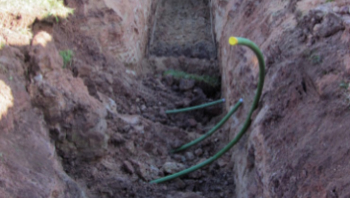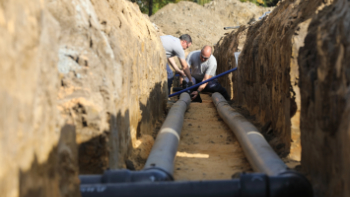Cold local heating – CO2-free heat supply
The heat supply of the future is cold: Cold local heating enables the implementation of CO2-free neighborhoods. In addition, you benefit from government subsidies.
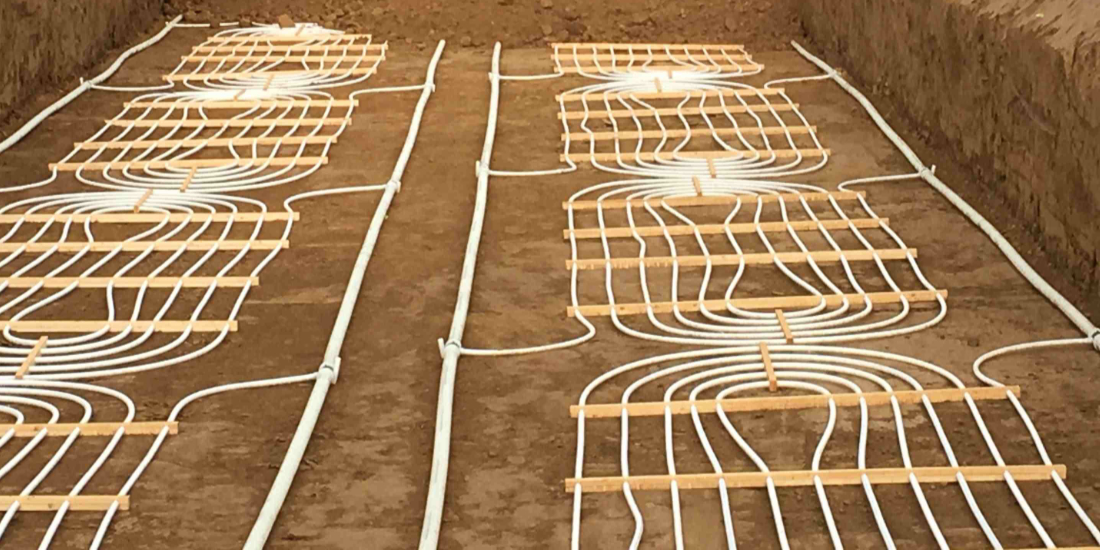
Foto: Stadtwerke Bad Nauheim
Do you want to supply a neighborhood with cold local heat?
In order to supply a neighborhood or residential area with cold local heat and operate it efficiently, it is important that the energy center also works efficiently. For this, you need a partner who has sufficient knowledge and practical experience with the cold local heating system.
And this is where we come in: enisyst GmbH was involved at a very early stage in one of the first realized cold local heating projects in Wüstenrot. Here, we took over the control and monitoring of the decentralized heat pumps and the geothermal collector. By coupling with the EU project Sim4Blocks, enisyst was able to gain initial practical experience in the grid-serving operation of decentralized heat pumps and their connection to aggregators and the grid control technology.
In Bad Nauheim (KNW-Opt project), enisyst currently controls not only the geothermal center with heat network pumps and valves, but also connects the heat pump control of the 140 residential buildings to the intelligent neighborhood control system.
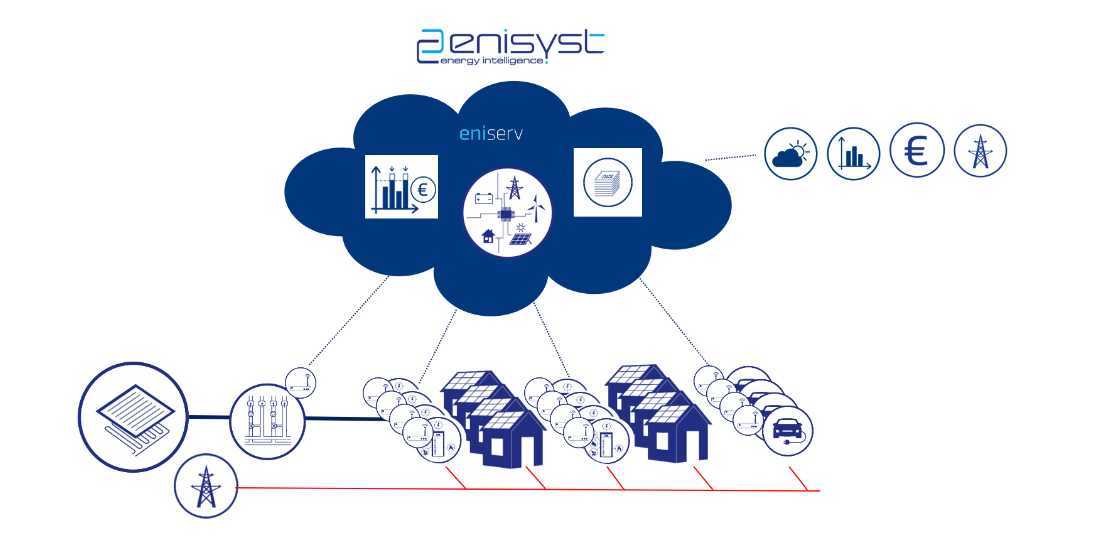
Cold local heating – Background:
CO2 pricing or CO2 tax makes heating more expensive – at least for households and industrial buildings that use fossil fuels such as natural gas or heating oil for it. More and more new buildings are therefore using heat pumps as a heating system. Preparing an entire construction area for the efficient use of heat pumps is the goal of cold local heating networks that operate close to ground temperature. The heat pumps in the connected buildings use this cold heat and, by supplying electricity, raise the temperature to a level required for heating and hot water production, and do so with very high efficiency. Only about one-fifth of a kWh of electricity is required per kWh of heat energy provided. Building owners also benefit from high subsidies for their buildings thanks to the CO2-free provision of heat (with green electricity). And it gets even better: The whole system can also be used in summer for free cooling of the buildings directly via the ground.
What does cold local heat mean?
Cold local heating networks are heating networks that are operated at a temperature level close to the ground temperature. This makes it possible to centralize the tapping of heat. The concept of cold local heating uses the constant ground temperature of 10 degrees Celsius, which prevails at certain ground depths throughout the year, to generate heat.
The geothermal heat is tapped with the help of ground collectors sunk 1.5 to 3 meters deep or by means of geothermal probes. In addition, various other low-temperature heat sources such as groundwater, river water and waste heat, e.g. from cooling processes or wastewater pipes, can be integrated. Heat from thermal solar collectors or PVT collectors can also be integrated excellently. Underground pipelines distribute the geothermal heat to the properties in the residential area and connect it to the decentralized heat pumps in the buildings.
It is particularly advantageous when both heating and cooling applications (such as a supermarket or data center) are located in a construction area. In this case, these systems can support each other via the cold local heating network. Compared to classical heat networks, cold local heat does not cause any heat losses. On the contrary: the heat network acts here as part of the ground collector!
Cold local heating receives government funding
The German Federal Ministry for Economic Affairs and Energy (BMWi) is funding feasibility studies and the realization of heating network systems 4.0. The funding can also be granted for cold local heating. The feasibility study should demonstrate at lower temperatures that this will save costs, energy or CO2 emissions.
Using cold local heat efficiently:
Based on experience from research projects in Bad Nauheim and Wüstenrot, we know how to efficiently supply neighborhoods and
residential areas with cold local heat.
The advantages of cold local heat for planners:
- CO2 emission free
- High energy efficiency
- Use of renewable energies
- Natural cooling
- No fine dust pollution
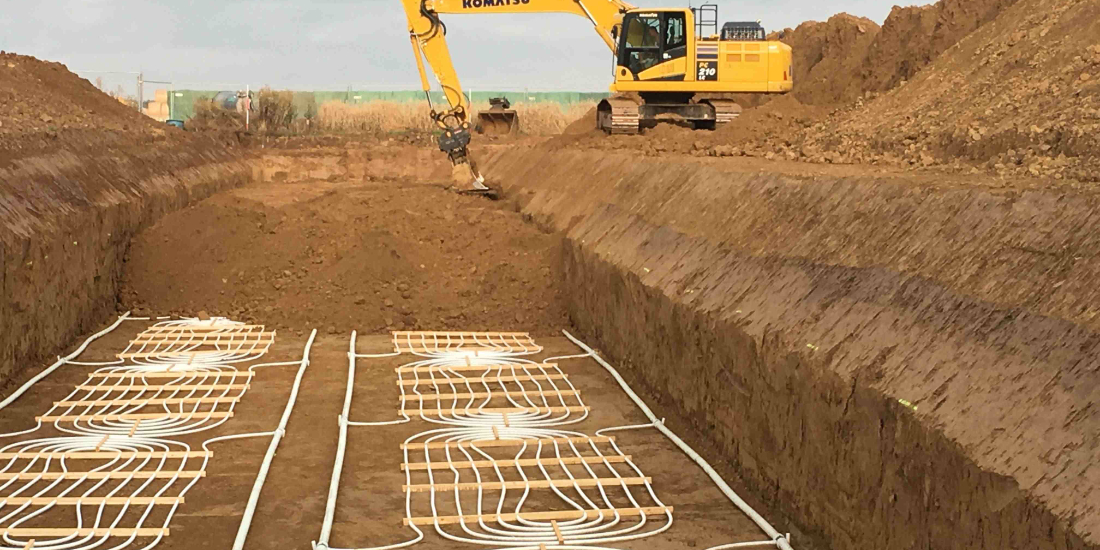
Foto: Stadtwerke Bad Nauheim
Everything from a single source:

Conception & planning
Together with you and partners from our network, we develop the concept for heat supply in the neighborhood with cold local heat. This enables us to provide the right experts for your application, be it on the subject of ground collectors, PVT collectors wastewater heat utilization or waste heat from cooling processes.

Operational management & monitoring
Our modular system is a control technology, energy management and operations management system in one and available as a web application from anywhere. User profiles can be used to define the depth of access for different user groups.

Information system App
Our app provides residents and building users in the neighborhood with information and recommendations on individual energy consumption or the charging status of their electric vehicles. Up-to-date information on waste collection, events and local weather forecasts are further additional benefits of the app that benefit neighborhood residents.

Sub Metering & Tenant electricity
Our system records all billing-relevant data, processes it and makes it available in a collected form. When implementing tenant electricity, we support you in developing and implementing the optimal measurement concept.

